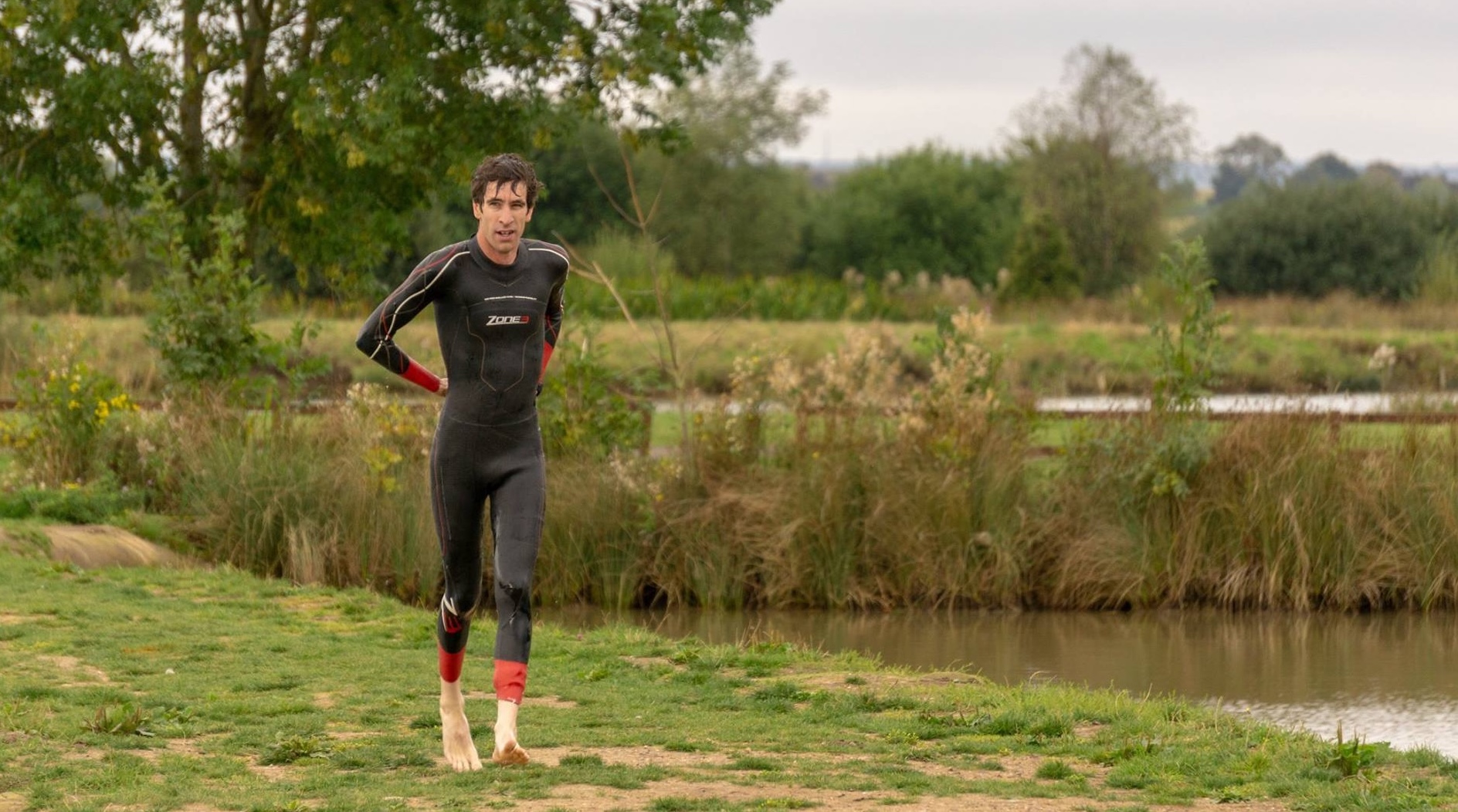Are you struggling to complete workouts? Has it been suggested you may have a vanity FTP? Confused as to what this may mean? I’ll try to explain in this article what a vanity FTP is and what you can do about it. Firstly we need to look at what Functional Threshold Power (FTP) is, or more importantly, what it isn’t. FTP is not (always):
The highest power you can sustain for 60 minutes
95% of your best 20 minute power
Your aerobic threshold
Your anaerobic threshold
The definition of FTP that most coaches and sports scientists now use is:
“The highest power that a rider can maintain in a quasi-steady state without fatiguing for approximately one hour” – Andrew Coggan
That’s quite a mouthful, so let’s have a look at it visually on a chart created using WKO5 from two athletes:
Athlete A

Athlete B

What you’re looking at is each rider’s power duration curve for the last 90 days. Without going into the details right now, you have time on the X axis and watts on the Y axis, so you can see that both riders can hold higher power over shorter durations, and the power they maintain drops over time, as you’d expect! The yellow line shows personal bests for each timeframe and the red line joins the dots to create a mathematical model that is used to calculate modelled FTP, or mFTP, which is denoted as the bottom dotted line.
Between around 10 minutes and 60 minutes (depending on the rider) the line starts to level off, this is where we find your FTP, the maximum power you can hold in a quasi-steady state without fatiguing for around an hour.
Rider A has an FTP of 223W with a TTE of 1:02:22, and rider B has an FTP of 215W with a TTE of 32:21. Most riders will have a TTE between 30 minutes and 70 minutes, which gives us an insight into how well trained an athlete is at holding high power. As a coach looking at each of these athletes I can work out how to develop each athlete and improve their training. Athlete A needs to lift his chart upwards, he’s unlikely to get much benefit from trying to increase TTE at this point, so we’ll look to increase his power over shorter durations such as 20-30 minutes, then when he increases his FTP significantly we could turn our attention to increasing TTE again. Athlete B however would benefit from extending the time he can hold his FTP for by spending extended periods at higher intensity (tempo, sweetspot) allowing him to hold 215W for longer, vastly improving his performance over an event such as an Olympic triathlon or standard duathlon.
Now we understand what FTP is, we can start talking about vanity FTP. As a coach I want my athletes to have the highest FTP possible, and every athlete wants to have the highest FTP possible, however this is where a lot of athletes get into trouble, and find themselves training to a vanity FTP, which is an overinflated estimation of what they’re capable of, let’s have a look at this and why it happens.
One of the many benefits of using WKO5 is it estimates the effect the anaerobic system is having on your efforts. FTP is an aerobic effort, as is everything up to around 120% of FTP (depending on the athlete), after which we start working anaerobically. This is where our muscles are demanding oxygen faster than our body can provide it, and we start to create an oxygen debt. This is our body’s fight or flight system and allows us to put in a huge effort up a short hill or sprint for a finish line, but leaves us gasping for air afterwards. As triathletes this is of limited use to us during most events as we opt for a steady, smooth application of power, but we can’t ignore it and the effect it has on our training. This chart for athlete B looks at the contribution the aerobic and anaerobic system makes to their effort.

The blue shaded area represents the contribution of the anaerobic system to the effort, the green represents the contribution of the aerobic system to the effort. As you can see, up to the 50 second mark the majority of energy being used to fuel his effort is anaerobic, beyond 50 seconds the aerobic system takes over pretty quickly, although the anaerobic system still makes a small, yes statistically important contribution beyond this point.
Using 95% of your average power from the standard 20 minute test is designed to account for the contribution made by your anaerobic system. This athlete however isn’t an especially gifted sprinter so at 20 minutes, only 3.3% of his energy is coming from his anaerobic system. Using the standard 95% equation he would only get an FTP of 210W, the 5W he’s lost here could be worth a lot of time over an Ironman and result in them wasting time with ineffective training.
On the other hand you could have a very talented sprinter, who has either come from a power lifting background or is simply blessed with a high number of fast twitch muscle fibres genetically. In this situation, they could well generate 10% of their 20 minute power anaerobically. Let’s say they put in 300W during their 20 minute test. As 10% of their power was generated anaerobically their FTP should be 270W, but using the median figure of 5%, they would get an FTP of 285W. They’d no doubt be able to smash short, hard workouts with their strong anaerobic system, but ask them to spend prolonged time at the high end of their aerobic zones and they’ll really struggle. This is because their FTP is too high, which can result in them working in zone 2 when they should be in zone 1, zone 3 when they should be in zone 2, e.t.c.
Many athletes out there may not have such a problem with this, they think that if they train at an FTP which is higher than their ability level, they’ll get fitter sooner. This is possible, but it’s far more possible they’ll burn out after several days of struggling through easy workouts and failing difficult ones, feeling demotivated and no doubt blaming the training plan for being too hard, especially if they’re following a standalone training plan where a coach can’t spot these trends and the athlete can’t feed back on how hard they’re working.
The bigger issue however is race planning, the vast majority of age group athletes will race to a set intensity factor, or IF. For an Olympic distance this may be 0.9, for a 70.3 this may be 0.8, for an Ironman this may be 0.75, this helps ensure that we get the most out of our bike leg, without burning our legs out ahead of the run. This is all based on the assumption that your FTP is accurate. If you are working to a vanity FTP you’re not willing to lower, you could find yourself riding an Ironman at 80% of your FTP instead of 75%, which is unlikely to end well for you, perhaps even resulting in a DNF. This is all because your FTP is based on the assumption that the anaerobic contribution to your 20 minute effort will be available to you indefinitely.
To understand why this is a problem, think of a racing driver who runs nitrous oxide in his car. By flicking a switch on his gearstick he can get a short, high powered, likely illegal injection of speed, but he only has enough for a 30 second boost. He could post a 1:45 minute lap when using his nitrous oxide, and 1:50 without using his nitrous oxide. If he was pacing a 12 hour endurance race he would be a fool to base his fuelling strategy on the lap time of 1:45, as this is only available to him once. For this same reason, a cyclist would be foolish to base his pacing strategy for a long event based on a figure which don’t account for the anaerobic contribution to their FTP.
This isn’t a perfect metaphor as cyclists will recharge their anaerobic battery slowly, and sometimes you need to dip into that reserve on a steep hill, but it should help you understand the dangers of having an FTP that’s not actually useful to train to or pace with.
Now that you understand why we need to account for this anaerobic contribution we need to understand how to account for it within our FTP. The best way to do this is using modelling software such as WKO5 (my preference), Xert or Golden Cheetah, but these can be truly overwhelming for the novice cyclist. You could use the Suffertest’s 4DP which tests you over 15 seconds, 1 minute, 5 minutes and 20 minutes back to back, to give you a figure which accounts for anaerobic contribution, but these aren’t ideal as you’ll already be cooked by the time you start your 20 minute effort. Finally, if you want to keep it as simply as possible, you can aim to empty your anaerobic tank by doing a five minute all out effort, followed by a few minutes rest, before you start your 20 minute test, of which you can use 100% of the average 20 minute power.
If this is all sounds a bit too complicated but you struggle to complete workouts, try reducing your FTP by 2-3%, a vanity FTP is rarely a conscious decision by an athlete, rather an overestimation by a piece of software or algorithm, and an athlete who isn’t willing to accept the figure may not be accurate.
FTP Doesn’t Win Races
If you’re still refusing to reconsider your inflated FTP, let’s look at why FTP isn’t the be all and end all of racing success.
You would be forgiven for looking at the podium of a time trial or the top three of the bike leg of a triathlon and thinking the rider in first had the highest FTP, followed by the rider in second place with the second highest FTP and so on down the positions.
However there are dozens of other factors which can affect the results of an event, the athlete’s bike, aerodynamics, W/KG, clothing, bike handling skills, start time, V02 max, time to exhaustion, ability to resist fatigue, nutrition, hydration, weight, these are all factors which will affect their finishing position.
Let’s return to athlete A and athlete B from earlier. Athlete A has an FTP of 223W with a TTE of 1:02:22, and athlete B has an FTP of 215W with a TTE of 32:21. They both took part in an 20K time trial yesterday on the same course pancake flat course on Zwift (removing a number of the variables), so who do you think won?. It would probably surprise you if I told you it was athlete B, who averaged 218W for a time of 29:29, while athlete A averaged 210W for a time of 34:16. Let’s start by expanding on the quantitive data:
Athlete A:
FTP: 223W
TTE:1:02:22
V02 Max: 38
W/KG at FTP: 2.4
CTL on day of TT: 55
Athlete B:
FTP: 215W
TTE: 32:21
V02 Max: 61
W/KG at FTP: 3.8
CTL on day of TT: 33
Ultimately athlete B set the faster time because he’s won club championship titles, finished over 100 events, is an Ironman finisher and has been training for eight years where athlete A is training for his first 70.3 distance event. There are dozens, if not hundreds of factors which influence your performance, your FTP does not determine your value as an athlete.
I hope this has illustrated to you that higher FTPs do not win races, and that it is instead a combination of many factors.
To get the most out of your training, you have to be honest with yourself about your ability. Training to an accurate FTP will allow you to really develop as a rider, improving all areas of your fitness quicker, resulting in faster times.
If you would like more help with your FTP, E-mail Simon@phazontriathlon.com for a coaching consultation session where we can analyse your data, ask you to perform additional tests where required, then provide you with a rider profile, along with workouts designed to improve your riding.




